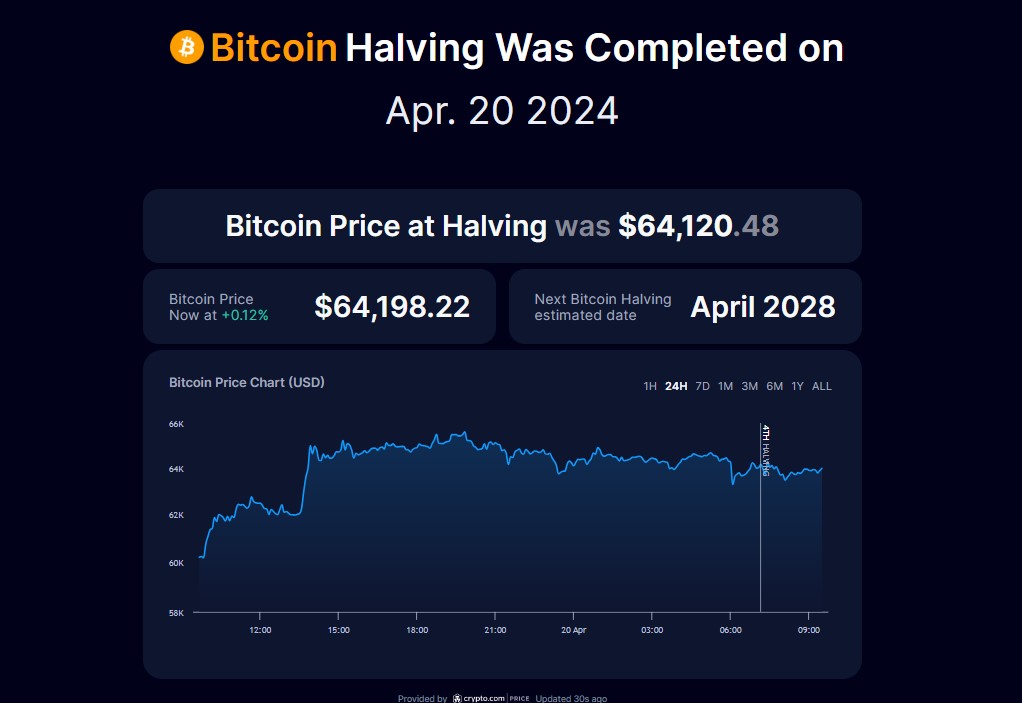Share this article
![]()
![]()
It was the moment most of Bitcoin's friends had been waiting for. At 8:10pm ET on Friday in New York, Bitcoin (BTC) experienced its fourth halving at a block height of 840,000. Block reward has been reduced from 6.25 BTC to 3.125 BTC.
According to data from Blockchain.com, miners collected high transaction fees on 840,000 blocks despite the halving of block rewards. The fees amounted to over 37 BTC, worth over $2.4 million.
On this historic day, the price of Bitcoin remained relatively stable at over $63,000. The price reached $64,120 during the halving, but fell slightly shortly thereafter.


At the time of writing, Bitcoin is trading at around $63,700, up about 6% in the past 24 hours, according to data from CoinGecko. The market capitalization of cryptocurrencies now stands at more than $2.4 trillion, increasing by 4% in the past 24 hours.
Most altcoins have recovered from previous losses and are currently trading in positive territory. Ethereum (ETH) and Binance Coin (BNB) both rose 5.5% in the past 24 hours. Solana (SOL) has been the star performer, surging 10% and currently trading at around $142.
Toncoin (TON) is the only cryptocurrency currently experiencing a correction. TON is currently trading around $6, down about 3% in one day.
What's next after it's halved?
Since its creation in 2009, Bitcoin has experienced four halvings. These halvings reduce miners' block rewards in half and are programmed to occur approximately every four years.
The next halving is estimated to occur around April 2028. This process will continue until all 21 million Bitcoins have been mined, which is predicted to be around 2140. After that, miners will only rely on transaction fees as compensation.
Historically, prices have increased after a halving. This is likely due to the reduced supply of new Bitcoins, creating scarcity and potentially increasing demand.
In the past three halvings, Bitcoin reached its all-time high several months after the halving.
However, with the introduction of spot Bitcoin exchange traded funds (ETFs) in the US and increased adoption by institutional investors, Bitcoin has already hit a new all-time high of $73,700 in March. For some analysts, these developments have already factored in the expected price increase after the halving and may signal a post-halving price decline.
Still, the future is unpredictable, especially given the current geopolitical tensions that can impact high-risk investments like cryptocurrencies.
Share this article
![]()
![]()


